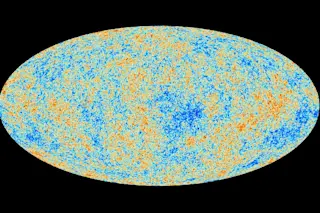This map shows the oldest light in our universe, as detected with the greatest precision yet by the Planck mission. The ancient light, called the cosmic microwave background, was imprinted on the sky when the universe was 370,000 years old. It shows tiny temperature fluctuations that correspond to regions of slightly different densities, representing the seeds of all future structure: the stars and galaxies of today. By analyzing the light patterns in this map, scientists are fine-tuning what we know about the universe, including its origins, fate and basic components. Image courtesy of ESA and the Planck Collaboration Today NASA released a new map of the universe, and described it with a slew of superlatives: It is the "most accurate," "most detailed," "best map ever." It's that good. Based on the first 15 months of data from the Planck mission's all-sky observations, this new map shakes up scientists' understanding of ...
Planck's New Recipe of the Universe: More Matter, Less Dark Energy
Discover how the cosmic microwave background sheds light on the universe's age and structure with insights from the Planck mission.
More on Discover
Stay Curious
SubscribeTo The Magazine
Save up to 40% off the cover price when you subscribe to Discover magazine.
Subscribe













